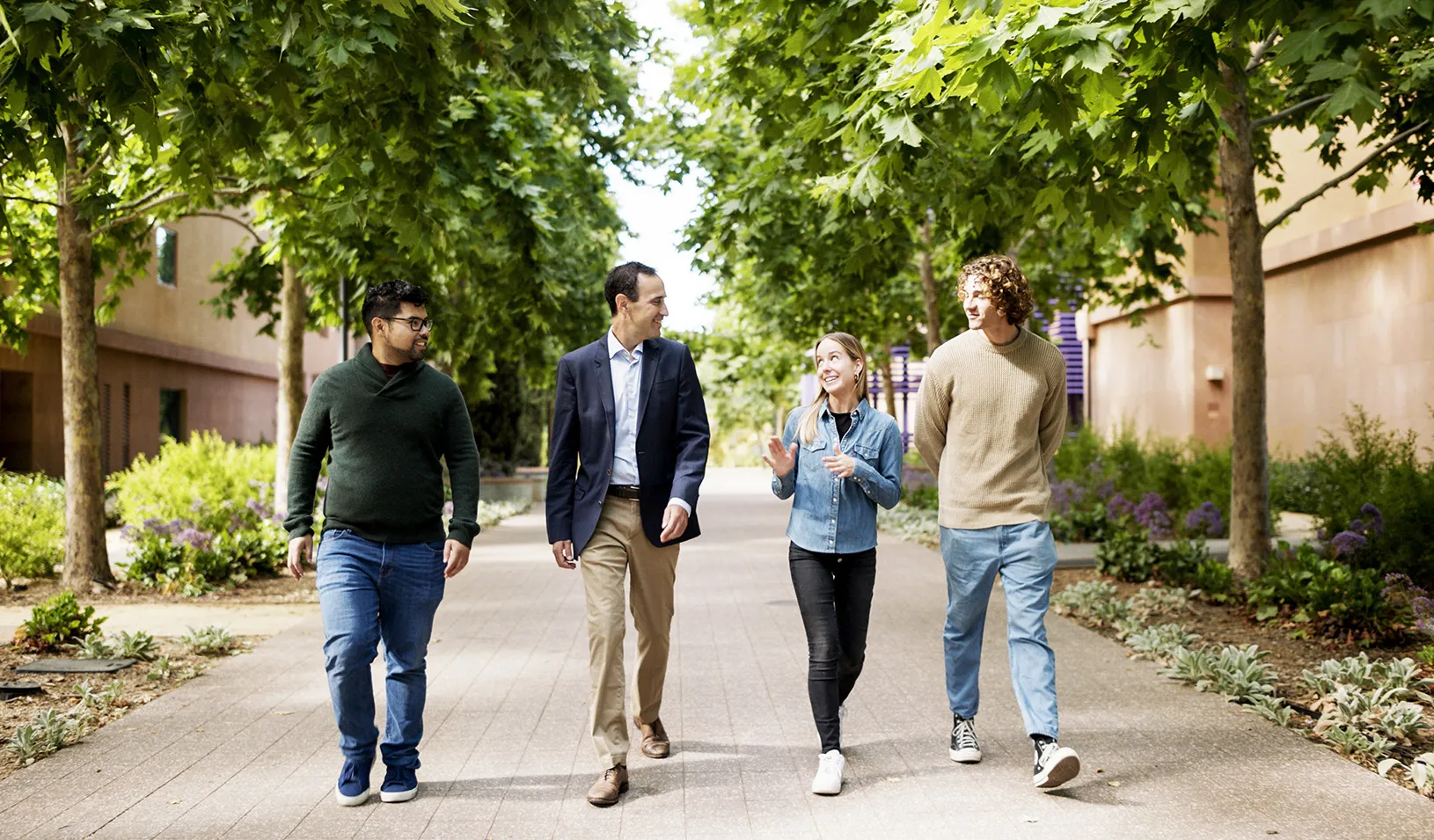Student Trip to Mexico Presents a Country of Contrasts
An MBA student shares his observations from a study trip; these trips offer an intensive learning experience and support Stanford GSB's global curriculum.
June 01, 2010
For 44 Stanford Graduate School of Business MBA students, spring break in Mexico included meeting the world’s richest man and spending an evening with a treasure hunter sitting on $300 million in gold. But I get ahead of myself. Let’s start at the beginning.
Arriving in Mexico City, we quickly understood why our trip was themed: “doing business in a city of contrasts.” Our hotel was situated in the upscale Polanco neighborhood, just a few blocks from a community of squat, bare houses where street vendors sold taquitos fried in converted oil drums. We drove through that poor area of the city to meet with the world’s richest man, self-made billionaire Carlos Slim Helu. During his hour with us, the Mexican telecommunications mogul displayed an uncanny knack for statistics and a great memory. Discussing a 20-year-old deal, he was immediately able to recall any minor detail as though it had happened only yesterday.
About an hour into the meeting, Will Boenig, MBA ‘11, asked Helu about allegations that he has a monopoly on telecommunications in Mexico. He dismissed the question, saying that such claims were completely unfounded. We continued to debate that answer during our debrief.
Our second day included a meeting with Carlos Fernandez, the CEO of Mexican brewer Grupo Modelo. The great nephew of the company’s founder, Fernandez introduced us to the ubiquitous theme of family business in Mexico. He confronted the topic head on, saying at Modelo — maker of Corona, Modelo Especial, and other popular beers — family relationships do not exist within the brewery walls. We also met with Manuel Medina-Mora, MBA ‘76, chairman and CEO of Latin America and Mexico for Citigroup. He detailed the economic crisis and discussed how he reduced exposures in Mexico and Latin America to limit losses during the downturn. Because of his performance, rumors have spread that Medina Mora may be Citigroup’s next CEO.
Our next meeting was with Fernando Alvarez, CEO of Compartamos Banco, a Mexican bank specialized in microfinance After studying the for-profit microfinance institution in class, we were excited to get a deeper look at the company and the ethical nature of its business. After the discussion with Alvarez, who described his firm as essentially a for-profit enterprise, we traveled to the outskirts of Mexico City to view how the company manages its weekly meetings with borrowers. In a half-built house in a poor village, my team met with a group from the bank’s “Credito Mujer” or Womens’ Credit program, which lends money to groups of between 10 and 30 women. Loans are made to women because they have significantly better risk profiles than men, we were told.
Compartamos has achieved a write-off ratio of around 3%. The firm offers free life insurance to those with an outstanding credit balance, which encourages its borrowers to keep at least a small balance. We also saw that the group loans create a social environment in which borrowers gather together each week to discuss their financial status, and we thought that members might be reluctant not to borrow because they would then leave the group. Sure enough, we learned that over 90% of borrowers renew their first loans immediately after repayment.
The lush green environment of Monterrey stood in contrast to the arid nature of much of Mexico, and the city’s architecture and design were far more modern. There, we met with Alvaro Rodriguez, the founder of one of the few venture funds in the country. Because so many businesses are family-run and funded, it can be difficult for outside investors to buy stakes in businesses or participate in new ventures, he said. We also met with Lorenzo Zambrano, MBA ‘68, CEO of cement and building materials giant Cemex, who discussed the economic downturn.
After more meetings than we could count, we were at long last in the resort area of Playa Del Carmen, meeting with Roman Rivera Torres, one of the original developers in the Cancun area. Cancun itself is an important and extremely successful, joint initiative between private developers and the government, designed to generate revenues from tourism. More intriguingly, we heard Torres describe his discovery of the remnants of the S.S. Golden Gate, an American ship that caught fire and sank off Manzanillo, Mexico, in 1862 and is rumored to hold more than $300 million in gold. He has written a book about the find titled Legend of the Golden Gate.
By John Mullins, MBA Class of 2011
For media inquiries, visit the Newsroom.
Explore More
Erin Nixon Joins Stanford GSB as Assistant Dean of Admissions

Nia Rose Froome, MBA ’23: Making Local, Fresh Food Available for All

New Research Fund Promotes Responsible Leadership for the Next Century
